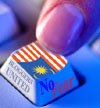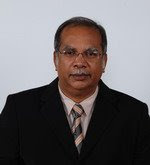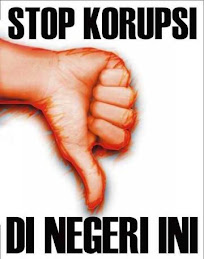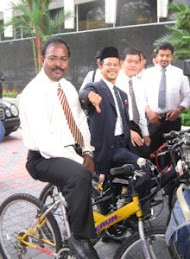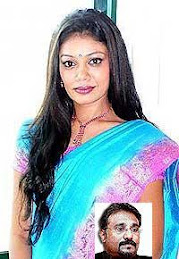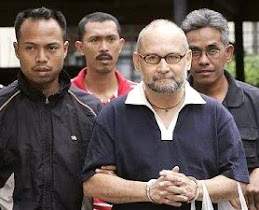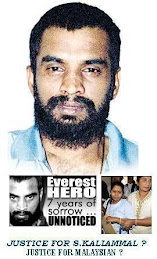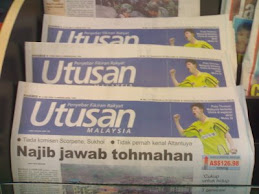 July 24, 1983 The Liberation Tigers mounted their first guerrilla style ambush using land mine against the Srilanka army. 13 soldiers died in this attack. This was followed by the worst genocidal attack by the Sinhalese on the Tamils. Thousands of lives and property worth many millions were lost. Tamils girls were subjected to sexual violence. In this riots, expected more than 2000 Tamils died. [It's better to read and understand why the Sri Lanka Tamils has to take the gun to defence their self rather then simply labelled them as a terrorist. Picture shows how the Tamilian was tortured during the riots]
July 24, 1983 The Liberation Tigers mounted their first guerrilla style ambush using land mine against the Srilanka army. 13 soldiers died in this attack. This was followed by the worst genocidal attack by the Sinhalese on the Tamils. Thousands of lives and property worth many millions were lost. Tamils girls were subjected to sexual violence. In this riots, expected more than 2000 Tamils died. [It's better to read and understand why the Sri Lanka Tamils has to take the gun to defence their self rather then simply labelled them as a terrorist. Picture shows how the Tamilian was tortured during the riots]
Tamil Eelam History
Part 1:Important Milestones
1. Ceylon gained independence on February 04, 1948. However, it was not complete independence. In terms of the defense agreement entered into between Britain and Ceylon, Colombo, Trincomalee and Katunayake bases continued to remain under British control.
2. In 1948, the very year of independence, the Parliament dominated by the majority Sinhalese, enacted the Citizenship Act which reduced the political strength of the Tamils by one-half. Under this Act, one million Hill country Tamils, whom the British brought from South India 200 years before to work in the tea and rubber plantations, lost their citizenship rights.
3. In 1948 the parliament legislated that the sword wielding Lion shall be the national flag of Ceylon. To appease the Tamils and the Muslims yellow and green stripes were added to the flag.
4. In 1949 the Hill country Tamils' franchise rights were deprived by simple amendment to the order in council. The new law Ceylon Amendment Act defined that only citizens have the right to vote in elections.
5. The leader of the All Ceylon Tamil Congress Mr. G. G Ponnambalam voted in favor of the citizenship Act and Ceylon (Parliamentary Elections) Amendment Act. Mr. S.J.V. Chelvanayagam voted against. This caused the All Ceylon Tamil Congress which was formed in 1944 to split into two.
6. In 1949 Thanthai Chelvanayagam broke away from the Tamil Congress and formed a new party. It was named Ilankaith Tamil Arasuk Kadchi (Federal Party).
7. In 1948-50 the then Prime Minister of Ceylon D.S. Senanayake launched massive Sinhalese colonization schemes in the Eastern province, the traditional homeland of the Tamils. Gal Oya in the Batticalo District, Allai and Kanthalai in the Trincomalee District were the colonization schemes launched by him.
8. The Hill country Tamils who were able to elect 8 members to the Parliament in 1947 failed to elect even a single member at the elections held in 1952.
9. On June 14, 1956 Mr. S. W. R. D. Bandaranayake, leader of the Srilanka Freedom Party and Prime Minster, who won the Parliamentary Elections help in 1956 caused Parliament, dominated by the majority Sinhalese to enact "Sinhala Only" as the official language of Ceylon. This was a negation of the hitherto accepted language policy of treating both Sinhala and Tamils as the official languages in place of English. The imposition of Sinhala only represented the subjugation of Tamils by Sinhalese imperialism. In protest the Federal Party which opposed the Sinhala only act staged Satyagraha in Colombo.
10. On July 26, 1975 the Bandaranayake-Chelvanayagam pact was signed. The B-C pact envisaged decentralization of powers to the North and East through the establishment of Regional Councils. But Bandaranayake abrogated the pact under pressure from Sinhalese chauvinists.
11. In 1958 following the National convention of the Federal Party held in Vavuniya, violence was let lose against the Tamils. There were heavy losses of lives and property.
12. The government of Bandaranayake passively connived with the Sinhalese hoodlums responsible for the violence directed against the Tamils and imposed emergency rule only after 4 days of rioting.
13. In 1961 the Federal Party launched a civil disobedience campaign and Satyagraha in front of Kachcheries in the Northern and Eastern provinces of Ceylon which paralyzed civil administration. Mrs. Bandaranayake's government used the military to break the peaceful Satyragraha campaign.
14. The Senanayake-Chelvanayagam pact was signed on March 24, 1965. This pact envisaged certain degree of regional autonomy to the North and East through the establishment of District Councils. But this pact too was abandoned in the face of opposition from the Sinhalese.
15. In the elections held in May 1970 the United Front headed by the Srilanka Freedom Party, Lanka Sama Samaja Party and The Ceylon Communist Party came to power after capturing 116 out of 157 seats in Parliament. In the same year militant Tamil youths formed the Tamil Manavar Peravai to fight the impeding introduction of "Standardization" to university admissions.
16. In 1971 admission to the university based on merit was abandoned and "standardization" to university admissions through G.C.E A/L examination results was introduced. Lower qualifying marks were fixed for Sinhalese than for Tamil students, both regarding the language of instruction and the subjects themselves. The introduction of "standardization" adversely affected Tamil students' access to higher education.
17. On May 22, 1972 a new constitution was adopted. Ceylon was renamed Srilanka. All ties to Britain were severed and Srilanka was declared a Republic. Buddhism was afforded foremost recognition. Because of the New Republican Constitution the sovereignty of the Sinhalese and the sovereignty of the Tamils reverted back to the Sinhalese and Tamils. To safeguard the language and education rights of Tamils, to halt the encroachment of Tamils traditional homeland through Sinhalese colonization, to stay and hit back when attacked by the Sinhalese, Prabhakaran realized that taking up arms is the only way. He formed the New Tamil Tigers organization comprising brave, self-sacrificing and disciplined youths.
18. On January 10, 1974 nine people lost their lives when the Srilankan Sinhalese police at the instigation of Alfred Duraiappha, Mayor of Jaffna, arbitrarily broke-up the 4th Tamil Research conference held in Jaffna by baton-charging and firing.
19. In 1975 Thanthai Chelvanayagam won the by election held for the Kankesanthurai electorate by a margin of more than 16,000 votes. Chelvanayagam proclaimed that his victory was a mandate for the Tamils to establish the state of Tamil Eelam by exercising their right to self determination. In 1972 Thanthai Chelva had resigned his parliamentary seat in protest against the new constitution and challenged Mrs. Bandaranayake's government to hold a by-election to test the acceptability of the new constitution by the Tamil people.
20. On July 27, 1975 Tamil traitor Alfred Duraiappah was shot dead. This marked the first attack in the history of the armed liberation struggle. The attack was mounted by Tamil New Tigers under the leadership of V. Prabhakaran.
21. On May 5, 1975 with the object of rallying the entire Tamil nation, the "Tamil New Tigers" were re-named "Liberation Tigers of Tamil Eelam." V. Prabhakaran was named the Chairman and Military Commander of the LTTE.
22. On May 14, 1976 the Tamil United liberation Front (TULF) was formed. A resolution to establish an independent Tamil Eelam was adopted at the TULF convention held at Vaddukkodai. This is called the Vaddukkodai Resolution.
23. In the elections held in July, 1977 the United National Party headed by J.R.Jayawardena came to power. The Tamil United Liberation front won 18 seats on a mandate for the establishment of an Independent, Sovereign, Secular, Socialist state of Tamil Eelam, to become the official opposition party. Following the election yet another racial riot was engineered and executed against the Tamils.
24.In July 1978 Democratic Socialist Republic of Srilanka was established under a new constitution. Presidential system of government came into effect. J.R. Jayawardena became the first president.
25. The Liberation Tigers of Tamil Eelam was proscribed by the Srilankan government as an illegal organization.
26. In July 1979, Parliament enacted the Prevention of terrorism Act. On July 11th emergency was declared in Tamil areas. Innocent youth were shot dead by the security forces in Jaffna.
27. In June 1981 under directions of two Sinhalese Ministers the army and the police set fire to important buildings in Jaffna town, specially the Jaffna Public Library considered one of the best in South Asia was torched. This resulted in the destruction of 44,000 valuable books. In addition printing presses and shops were also burnt down. Civilians were killed by the army . Another racial riot broke out.
28. The first Tiger fighter Lieutenant Sathiyanathan (Sankar) attained martyrdom on November 27, 1982.
29. On July 24, 1983 The Liberation Tigers mounted their first guerrilla style ambush using land mine against the Srilanka army. 13 soldiers died in this attack.
This was followed by the worst genocidal attack by the Sinhalese on the Tamils. Thousands of lives and property worth many millions were lost. Tamils girls were subjected to sexual violence.
On July 27-28, 53 Political prisoners and detainees incarcerated at the Welikada prison were brutally murdered inside the prison by Sinhalese convicts with the connivance of the Sinhalese prison guards. This is popularly known as the " Welikada Murder".
30. In 1984 an all Party conference was convened by the Srilanka government. Indra Gandhi was assassinated by her own Sikh body guards.
31. In July-August 1985 talks between the Srilankan government and Tamil militants were held in Thimbu, the capital of Bhutan. The talks ended in failure.
32. In January, 1987 an economic blockade was imposed by the Srilankan government on the Jaffna Peninsula. Minister for National Security Lalith Athulathmudail announced the launching of "Operation Liberation". The Sinhalese army attacked the Vadamarachi regions of Jaffna district. Black Tiger captain Miller executed a suicide attack on the Sinhalese army camped in Nelliady Madhya Maha Vidyalayam. Hundreds of soldiers died in the attack.
33. In July 29, 1987 Rajiv Gandhi and J.R signed the Indo-Srilanka Peace Accord without the consent of the LTTE. The LTTE leader who was taken to Delhi on the eve of signing the accord was forcibly confined at Ashoka Hotel incommunicado. Later LTTE Leader V.Prabhakaran declared at the meeting held at Suthumalai that India had signed the agreement to safeguard her own geopolitical interests. This is popularly known as the Indo-Srilanka Peace Accord. But the Tamils even today believe the Accord was a betrayal of their trust by the Indian Government.
Part 2: Jaffna Kingdom
In the previous chapter we looked into important milestones in chronological order about the history of Ceylon. Let us look at them somewhat in detail from now onwards.
We learnt that Ceylon gained independence in 1948. Though Ceylon obtained independence from the British, long before that foreign colonial powers had conquered the Jaffna Kingdom comprising the North and East and the Kotte Kingdom in South West, and the Kandyan Kingdom in the Center.
Portuguese first set foot in Ceylon in 1505. At that time there were three kingdoms in Ceylon. They were the Jaffna, Kotte and the Kandyan Kingdoms.
First the Kotte Kingdom was captured by the Portuguese. Then in stages they brought the western territory of the Jaffna Kingdom under their control. Finally in 1519 they enslaved the Jaffna Kingdom by defeating the last king Sankili in the battle field. However, the defeat of Sankili didn't mean the end of resistance in Jaffna. Between June 1619 and February 1621 there were several uprisings against the Portuguese. Consequently the Portuguese lost many areas of the Jaffna Kingdom. However, the uprisings were put down due to Portuguese command of the sea which enabled them to bring in reinforcements from India and Colombo.
The Portuguese ruled Jaffna with a heavy hand. Christian missionary activity spread simultaneously with destruction of Hindu temples. In 1628 a small force from Kandy attacked Jaffna. The Tamil people who were waiting for an opportunity rose in revolt against the Portuguese. The Portuguese were forced to retreat inside the Jaffna Fort. However, the combined Tamil and Sinhalese forces were not equipped for a siege warfare. The Portuguese defeated the Tamil-Sinhalese forces by shelling them from the Fort. After that the Portuguese gradually regained control of the lost territory.
The Portuguese conquest of Jaffna was facilitated by several factors. Jaffna was easily accessible by sea. There were Portuguese outposts at Mannar and on Coromandel Coast. By the second half of the 16th century the Jaffna Kingdom had lost much of its power due to rivalry for the throne. Though the Jaffna King sought the help of Raguantha Nayakkan who ruled Madurai it did not materialize. Above all the Portuguese used Sinhalese mercenary troops to defend the Jaffna Kingdom.
It should be observed that although the Portuguese landed in Ceylon in 1505 it took them another 115 years to conquer the Jaffna Kingdom.
The Kotte Kingdom came under complete control of the Portuguese in 1597. The Kandyan Kingdom was ceded to the British in 1815.
Sankili was captured by the Portuguese and taken to Goa where he was hanged.
Though the Jaffna Kingdom fell, the areas to the south called Vanni did not accept the rule of the Portuguese. It did not pay tribute to the Kandyan Kingdom or to any other kingdom. It functioned as an autonomous entity. However, the three Vanniamai in the East (Then Tamil Eelam) viz Kodiyaram Vannimai, Palugamam Vannimai and Pannamai Vannimai sought the help of the Kandyan Kingdom for their defense. But they still functioned as autonomous regions.
Although at different times the territory of Eelam came under foreign rule, it never lost its Tamil Identity. even its borders remained intact till 1833.
The Jaffna Kingdom existed with Nallur as its capital from 1215 AD 1619 AD. The following are the names of the Kings and their period of rule of Tamil Eelam:-
1. Kalingaman alias Koolangai Singai Aryan alias Kalinga Vijeyabahu (1215 to 1240)
2. Kulasegara Pararajasegaram (1240 to 1256)
3. Kulothungan (1256 to 1279)
4. Vikramnan (1279 to 1302)
5. Varothayan (1371 to 1380)
6. Marthanda Perumalan (1325 to 1348)
7. Kunapooshanan (1348 to 1371)
8. Virothayan (1371 to 1380)
9. Jeyaveeran (1380 to 1410)
10. Kunaveeran (1410 to 1446)
11. Kanagasooriyan (1446 to 1450). From 1450 to 1467 Jaffna Kingdom came under the rule of Kotte kingdom. Troops which came under the command of Chenpagap Perumal captured Jaffna. Later he become King of Kotte under the name of King Bhuvanekabahu (VI). Kanagasooriyan fled to Tamilnadu and came back with an army and re-captured the Kingdom and again ruled from 1467 to 1478.
12. Pararajasegaran (1478 to 1519)
13. Sankili Segarajasegaran (1519 to 1561). He was born to the third wife of Pararajasegaran.
14. Pararasa Pandaram, Pararasasekaran (1561 to 1565). he is son of Sankili.
15. Kurunchi Nainar (1565 to 1570)
16. Periapillai Sekarasa Sekaran (1570 to 1582)
17. Puvirasa Pandaram II (1582 to 1591)
18. Ethirmanna Singa Pararasasekaran (1591 to 1615).
19. Sankili Kumaran (1615 to 1619).
In all Jaffna Kingdom existed for 403 years.
We learnt in the last chapter about the arrival of the Portuguese and the capture of the Jaffna Kingdom in 1619. Also we learnt that the Jaffna Kingdom existed for 403 years and the names of the 19 kings who ruled during the same period. For over 200 years the Jaffna Kingdom remained the single most powerful Kingdom in Ceylon. The Jaffna Kings maintained close relationship with South Indian Kingdoms and later with the Portuguese. This we can glean from Sinhala historical books, some Sinhala inscriptions and through Sinhala literary works like Kokila Sandesiya, Paravi Sandesiya, Parakum Paciritha.
From the beginning of the 16th Century we can learn the history of the rulers of Jaffna lucidly and someway in detail from Portuguese sources.
There are some Tamil books, if not in great detail, but at least to some extent, that gives the history of the origin, rise and growth of the Jaffna Kingdom and the history of its rulers. One such book is the Yalpana Vaipavamalai. Others are the Vaiyapadal, Kailayamalai, Rajamurai and Parajasegaran Ula.
The Yalpana Vaipavamalai was written by Mylvagana Pulavar from Mathagal in the eighteenth century. From the forward to the book it can be understood that this book was written at the request of the Dutch authorities and the author based his written on books like Vaiyapandal, Kailayamalai, Rajamurai and Parajasegaran Ula. Both Rajamurai and Parajasegaran Ula are now extinct.
Vaiyapandal was written by Vaiyapuri Aiyar during the reign of King Segarajeskeran. This book describes events commencing from the first ruler of Jaffna. It also describes the names of the chieftains and social groups and how they came from Tamil Nadu and settled in Jaffna and Vanni. Like other Tamil works Vaiyapandal also does not give the events in chronological order.
In the thirteenth century (1215 AD) following the invasion of Kalingamagan (1215-1255 AD) the Polonaruwa Kingdom which was already in a state of decay declined in power. Magan ruled with Polonaruwa as his capital. He was then the most powerful monarch in Ceylon. After the fall of Polonaruwa the Sinhalese Kings shifted their capitals to Dambedeniya and Yapahuwa. The Vanni King Vijayabahu III captured Mayarata and ruled with Dambedeniya as his capital.
His son Parakramabahu II (1236-1270 AD) captured the hill areas and the southwest and strengthened his rule. He, like his father, entertained the ambition to capture Rajarata again and bring it under his rule. A number of Vanni chieftains are said to have been persuaded to shift their allegiance from Magan to Parakramabahu.
Following the fall of Polonaruwa there arose several minor kingdoms called Vanniars. Those areas ruled by these minor kings under the name of Vanniars were called Vannipattu or Vanni. Since some of the warriors consisted of Vanniars, the appearance of Vanniyars must have occurred during the Polonaruwa period.
The ancient Batticalo chronicle states that Magan captured Polonaruwa and then gave military control to the Vanniars.
The Konesar inscription states that Kulakkoddan appointed Vanniars as rulers of Trincomalee, Nilaveli, Kaddukkulam areas. Kulakoddan's real name was Cholkathevan.
The Chulavamsa and other chronicles say that Magan stationed troops at places like Trincomalee, Koddiyara, Kantalai, Padavia, Kaddukkulam, Illuppaikadavai, Kytes, Pulachery and ruled Rajarata from his capital Polonaruwa. Polanaruwa captured and ruled by Magan was later over-run by the Javanese.
Part 4:Ariyachackravathis...
The King of Java by the name Chandrabanu twice invaded Ceylon from Malaya. On both occasions his invasion ended in failure. Later he raised an army from Chola Nadu and Pandiya Nadu and captured territory in North Ceylon ruled by Magan. After consolidating his position he again attacked the Dambedeniya kingdom ruled by Parakramabahu II. Chandrabanu demanded the surrender of Buddha's Tooth relic and the kingship to him failing which he informed Parakramabahu II to be ready for war. According to Chulavamsa Parakramabaku II refused to accede to the demands made by Chandrabanu and was successful in halting the invading Army which had penetrated upto Yapahuva and completely freeing him self from his (Chandrabanu) domination. Yet Chandrabanu's rule covered the Jaffna Peninsula, Vanni in the North and Trincomalee.
The place names such as Chavakachcheri, Chavankoddai and Chavakakoddai came into existence as a result of the rule of Chavakas in the 13th century.
Around this time the Pandian empire under the rule of Maravarman Sunderapandyan became very powerful. during his reign the domination of the Kingdom in North Ceylon by Pandias was further strengthened.
When Chandrabanu refused to pay tribute to the Indian empire, Maravarman Suderapandian defeated Chandrabanu and brought his Kingdom under his domain.
Among those chieftains who were left behind by the Pandias to rule over Jaffna one Pandimalavan emerged very powerful. After Chandrabanu, his son accepted the suzerainty of the Pandias and ruled for some time. After him, it is claimed that when there was no successor to throne Pandimalavan who hailed from the village of Ponpatti went to Madurai and brought Prince Singairiyan and crowned him king of Jaffna. The rule by Ariyachakravarthis were established in Jaffna as a sequel to invasion of Ceylon by Pandias under the leadership of army general Ariyachackravarthi about A.D 1284.
According to inscriptions, during the rule of Maravarman Kulasegaran (AD 1268-1310), Ariyachakravarthis served both as army generals and ministers under him.
According to the astrological book Segarajasekeramalai the ancestors of Jaffna Kings served as army generals and ministers under Pandias. They are said to be Brahmins who belonged to Kasiyappa ancestry and descendants of five-hundred and twelve "Panchagrama Vethiyar" of Ramesvaram temple.
The Aryachackravarthis are not in fact Aryans in the ethnic sense, but they referred to themselves as such because of matrimonial relationship established with brahmins in Rameshvarmam.
The Chulavamsam referring to the invasion of Pandias following the death of Bhuvanakabahu 1 (AD 1272- 1281) states that Pandian Kings despatched troops under the command of a Tamil army general. Although he was not an Aryan he was considered both popular and influential. Further it states that the invading force destroyed the fortified city of Yapahuva and carried away the Budha's Tooth relic and other priceless valuables.
Consequent to the invasion by Pandias under the command of Aryachckravarthi the Sinhalese kingdom got further weakened. Yapahuva lost its status as capital city. Also there was infighting for the throne between Bhuvanakabahu II (son of Bhuvanakabahu I), and Parakramabahu III (son of Vijayabahu IV, AD 1271-1272) As a result the Sinhalese Kingdom got divided. Bhuvanakabahu made Kurunagala his capital and ruled from there. Parakramabahu III went to Madurai and retrieved the Tooth Relic that was taken away by the Pandian king and installed same at Polonarwa where he established his rule.
The Ariyachakravarthi mentioned by Chulavamsam or some other descendant of him must have by passage of time crowned himself king of Jaffna. The name Ariyachakravarthi does not refer to real name but one denoting ancestry.












































